By Wu Haoyu
I. Personal Art Experience and Exploration
In university, I encountered ceramics and decided to wholeheartedly immerse myself in the world of ceramic art, which is filled with infinite possibilities. Ceramics possess unique artistic characteristics, and a thorough exploration from material craftsmanship to forming techniques constitutes an exceedingly lengthy process. The scope of knowledge involved is extensive, yet this journey is indispensable. In the early stages of modern ceramic development in China, learning resources were scarce, and books became the optimal medium for education. Overview of Modern Ceramic Art in the World by Bai Ming allowed me to understand the current status of global modern ceramics development and discover significant exemplary works. World Famous Ceramic Artists’ Studios, another work of his, influenced my techniques and artistic concepts in ceramic art creation. Ceramic Art Glaze by Zheng Ning served as a practical handbook on glaze craftsmanship, providing profound inspiration. Many other specialized books also played crucial roles in this process, helping me absorb ceramic knowledge and grow.
In 2008, I created the Encounter series of ceramic works (Figure 1). In this series, I focused more on how to break free from the conventional creation mindset. In a state devoid of specific themes and content, I “scribbled” rapidly, freely, and disorderly, aiming to discover pure forms within the intertwining lines. I also attempted to speed up the process to minimize contemplation about the artwork itself (Figure 2). I once wrote, “In recent years, I have been decluttering my mind, trying to forget the pre-existing ideologies, refraining from thought, and even forgetting the material and ceramic creation itself. I search for an instinct to create with passion, slowly presenting my subconsciousness from thought to no thought, theme to no theme, form to no form, and the final form can be considered as an intentional arrangement with unintentional outcomes” (Figure 3-4).
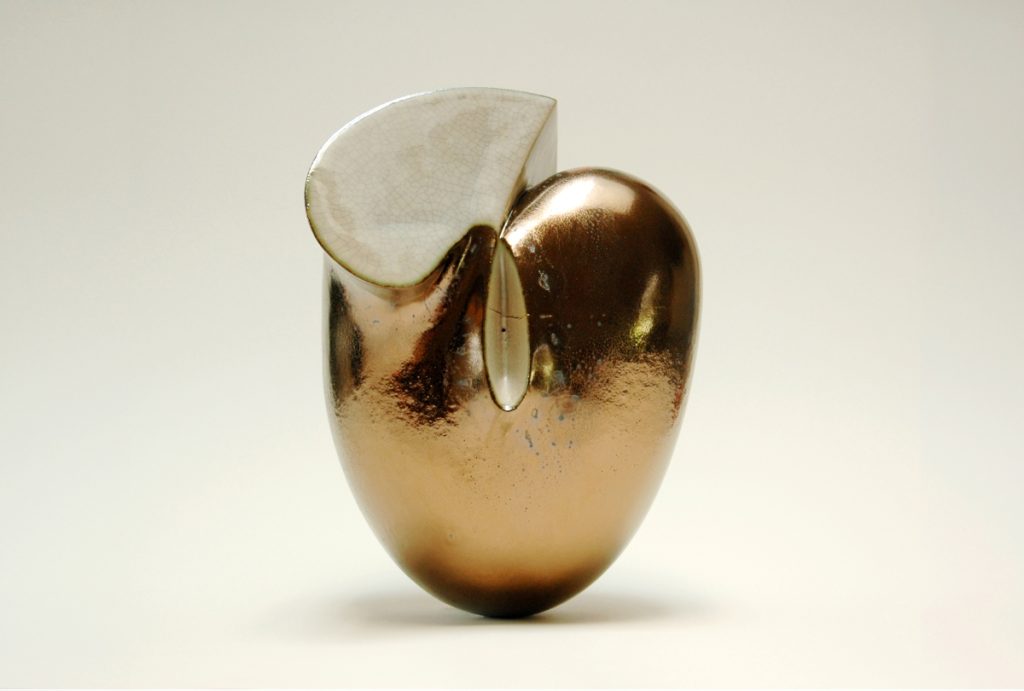





The creation of the Encounter series brought me a brand-new perspective and an unprecedented sense of ease. New Stoneware was born in such a creative state. Encounter was the starting point of my ceramic art creation, while the New Stoneware series explores the return and introspection of Eastern culture. Without deliberate searching or sketches, I directly molded porcelain clay on stones based on the form of the stones. This creative method not only gives a new life to the form of the stones, but also involves the further transformation and refinement of the stones’ shape (Figure 4) (Figure 5).
In this process, I began to reinterpret and innovate traditional ceramic art, attempting to combine traditional techniques with modern aesthetic concepts and trying to create works with both historical heritage and contemporary characteristics. This is an exploration of craftsmanship as well as a collision of ideas and cultures. Through my works, I convey my understanding and insights into ceramics, nature, and culture (Figure 6).
II. Study on New Context of Eastern Culture in Ceramic Art
Eastern culture, especially Chinese culture, possesses profound historical roots and rich philosophical content. In Chinese culture, stones are not only products of nature but also carry rich cultural and historical significance. The stone appreciation culture in China can be traced back to ages ago. Scholars and poets often treat stones as friends who they talk to and draw inspiration from. In their eyes, stones are more like a spiritual sanctuary than just material entities. In the New Stoneware series, stones, paper, and artifacts are metaphors and carriers of culture and philosophy. I try to combine these traditional elements with modern artistic concepts to create a new ceramic language (Figure 7).
Tan Dun’s musical works, especially the combination of the sounds produced by striking and rubbing stones and symphony, convey the integration of natural and artificial instruments. This has provided me with a new perspective on the relationship between ceramic and music. To better express this integration, I used porcelain clay on natural stones (albite) to create artistic forms, merging stones with the forms. This combination reflects the fusion of new and conventional culture, as well as the blend of the contemporary and the traditional (Figure 8) (Figure 9).
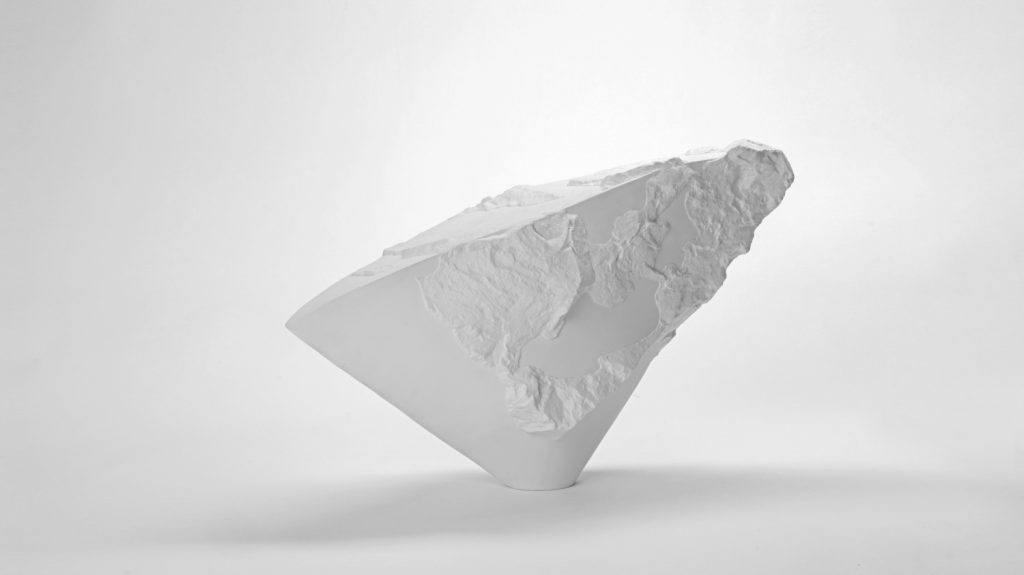
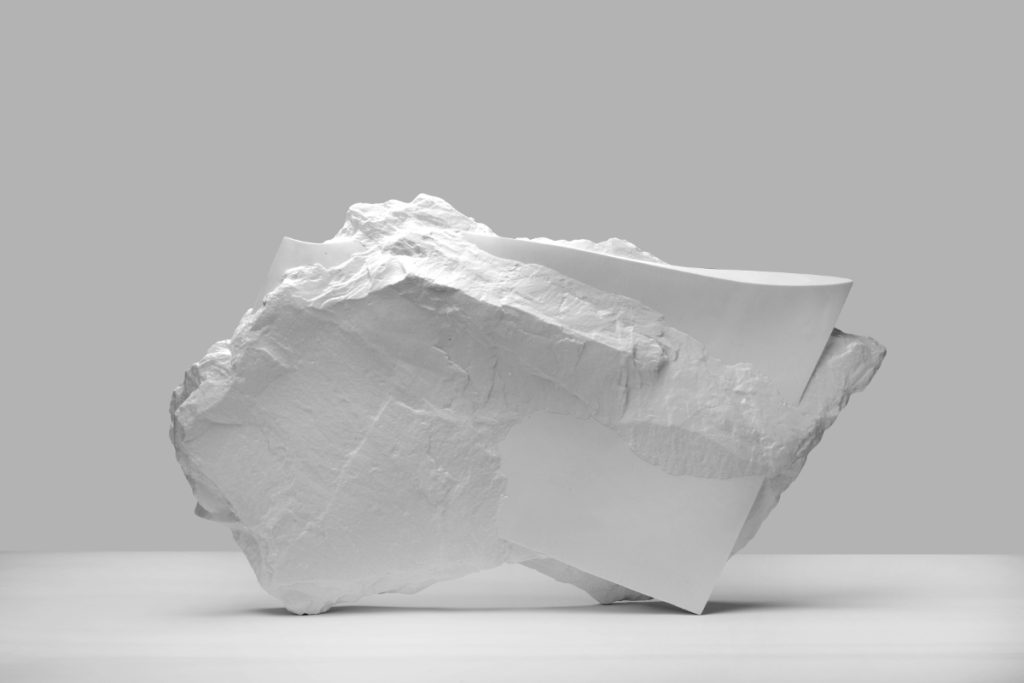
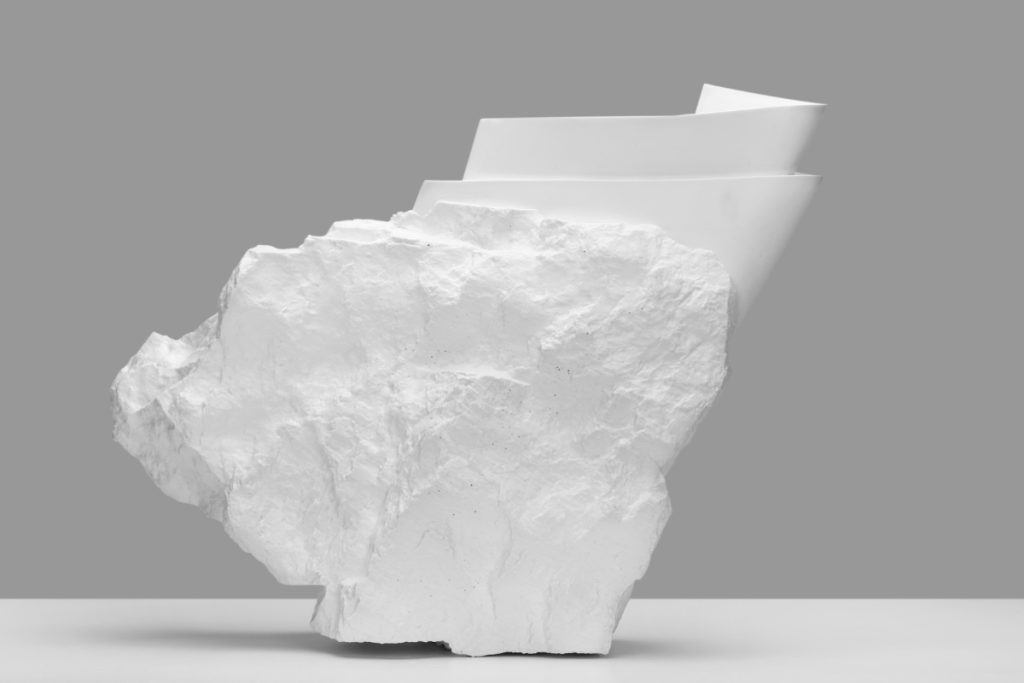
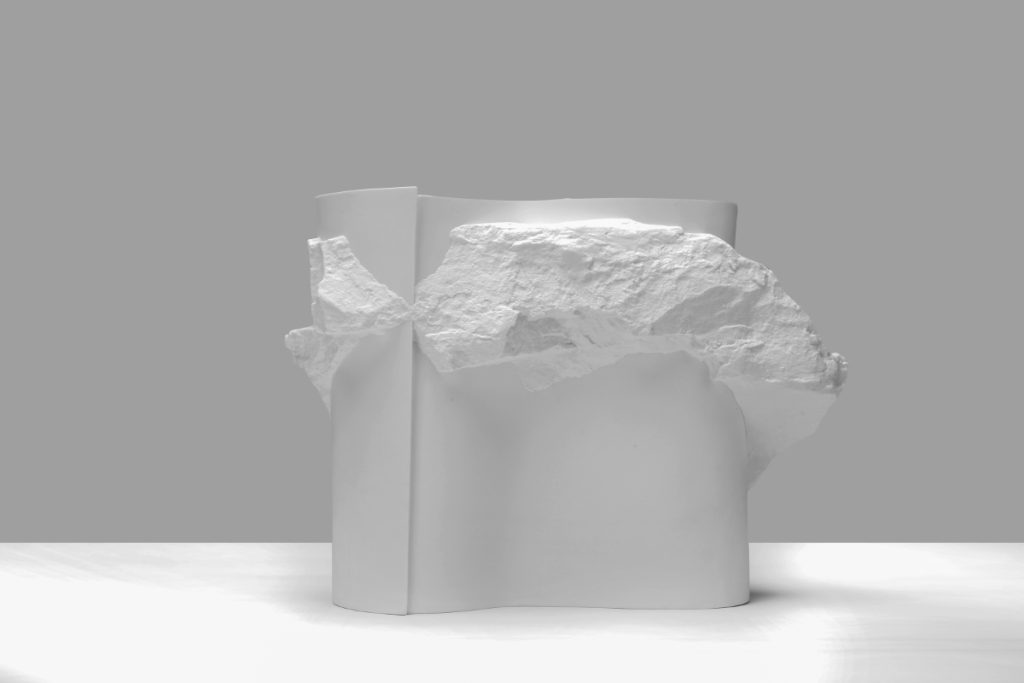
Paper plays a highly significant role as a creative element in the New Stoneware series. Invented by the Chinese, paper serves as a material for writing and a carrier of culture. In the artworks, paper and stone interact with each other. Despite its light and thin nature, paper can effortlessly cut through stone, metaphorically implying the boundless power of culture. Through artistic fusion, my aim is to create a form that captures both the natural essence of stone and the cultural significance of paper. While I was creating, I felt endless inspiration and motivation brought by the profound foundation and rich content of Eastern culture (Figure 10). It taught me how to perceive nature and human society, how to view tradition and modernity, and how to appreciate oneself and others. These perspectives and attitudes have influenced my ceramic creation and values. The New Stoneware series is my in-depth exploration and expression of Eastern culture, nature, and modern art. It is a journey of cultural and philosophical exploration, reflecting my profound contemplation and reflection on Eastern culture and contemporary art (Figure 11).
III. The Contrast and Harmony Between Ceramic as “Vessel” and Stone as “Context”
I once wrote that the New Stoneware series was recreated based on the form of stones, exploring a new context for the transformation of Eastern culture in ceramic language. There is a strong contrast between ceramic as “vessel” and stone as “context”, contributing to the harmony between new and conventional culture, the contemporary and the traditional in the works. In Eastern culture, the understanding of “vessel” and “context” fundamentally differs from Western culture. In the West, artifacts are often seen as practical tools, while in the East, especially in China, they are often endowed with more cultural and philosophical significance. In Chinese culture, both terms “vessel” and “context” carry profound cultural and philosophical significance. “Vessel” not only refers to tangible objects, but also represents a spirit and attitude. In ancient times, “vessel” was often used by scholars and poets to describe a person’s temperament and character which embody noble moral qualities and ambitious aspirations (Figure 12 -13).
In the New Stoneware series, I attempt to explore the relationship between the “vessel” of ceramics and the “context” of stones, find the contrast and harmony between them, and present this unique ceramic language to the audience. Ceramics, a traditional material, have carried China’s cultural and historical heritage for thousands of years. The “vessel” form of ceramic represents human creativity and skills. It is the result of human wisdom; While stone, as a product of nature, represents the power and beauty of nature in its “context” form. The contrast and harmony enrich the content and artistic expression of the work. The convergence of these two elements signifies not only the integration of tradition and modernity but also the harmonious blend of nature and humanity (Figure 14).
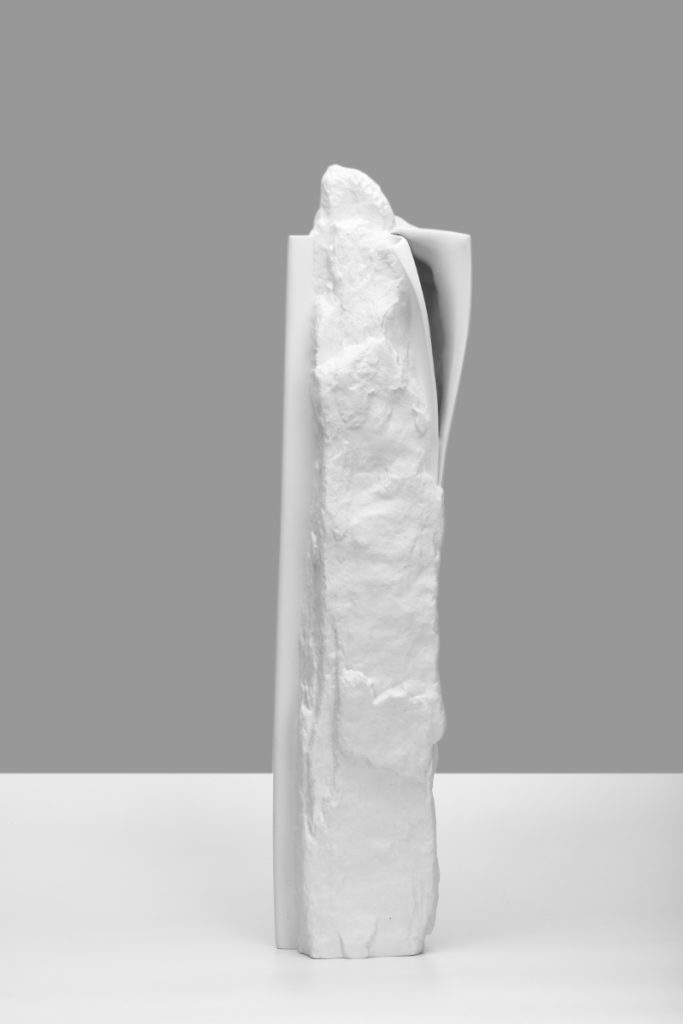
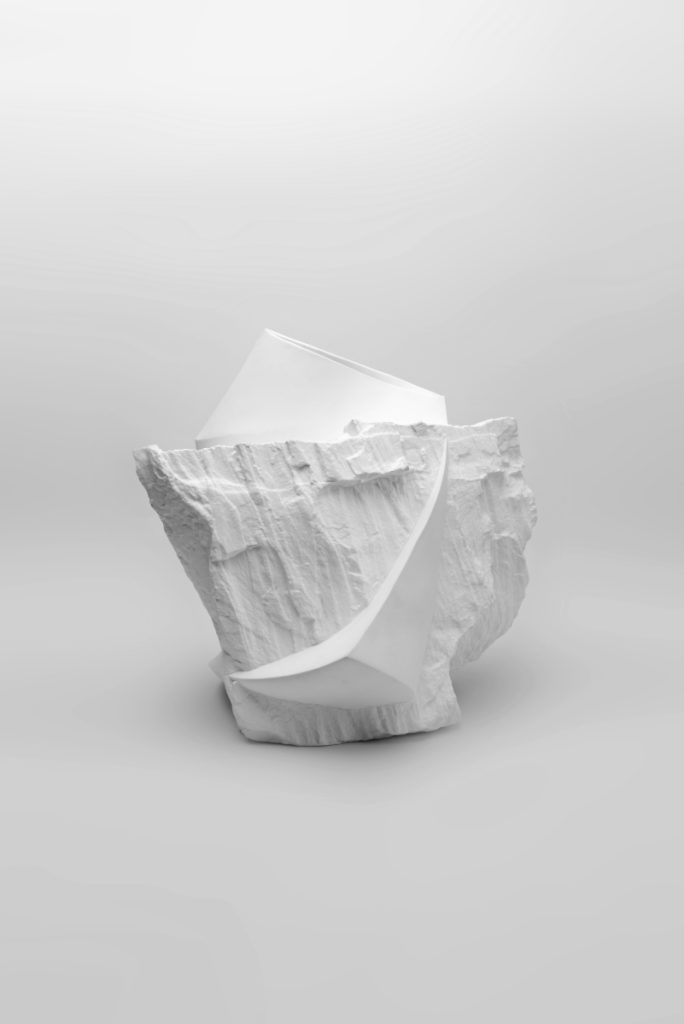
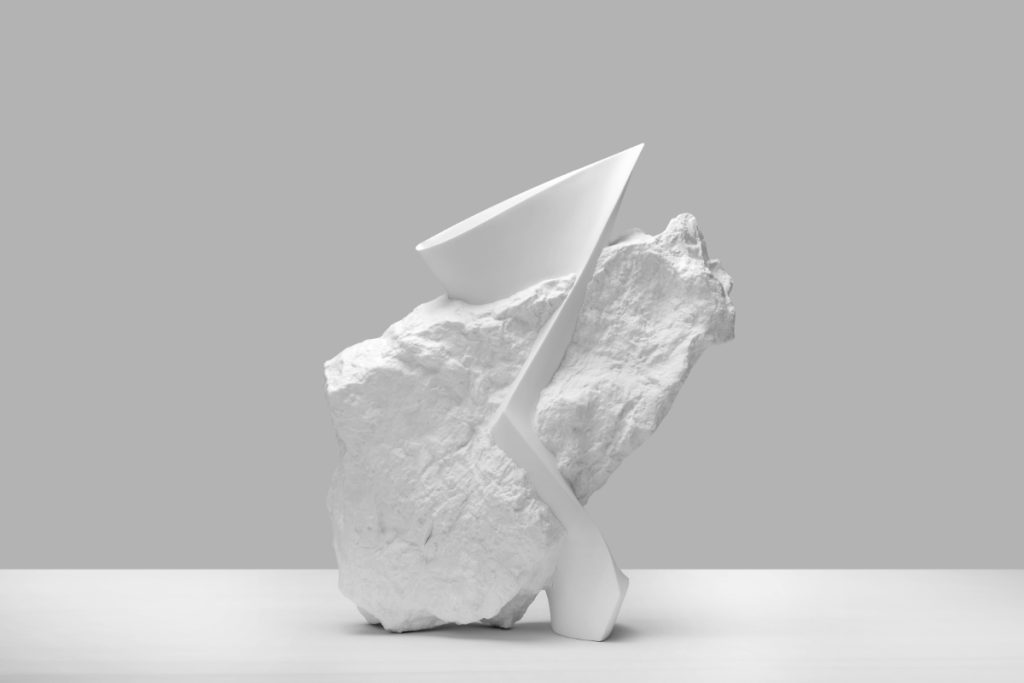
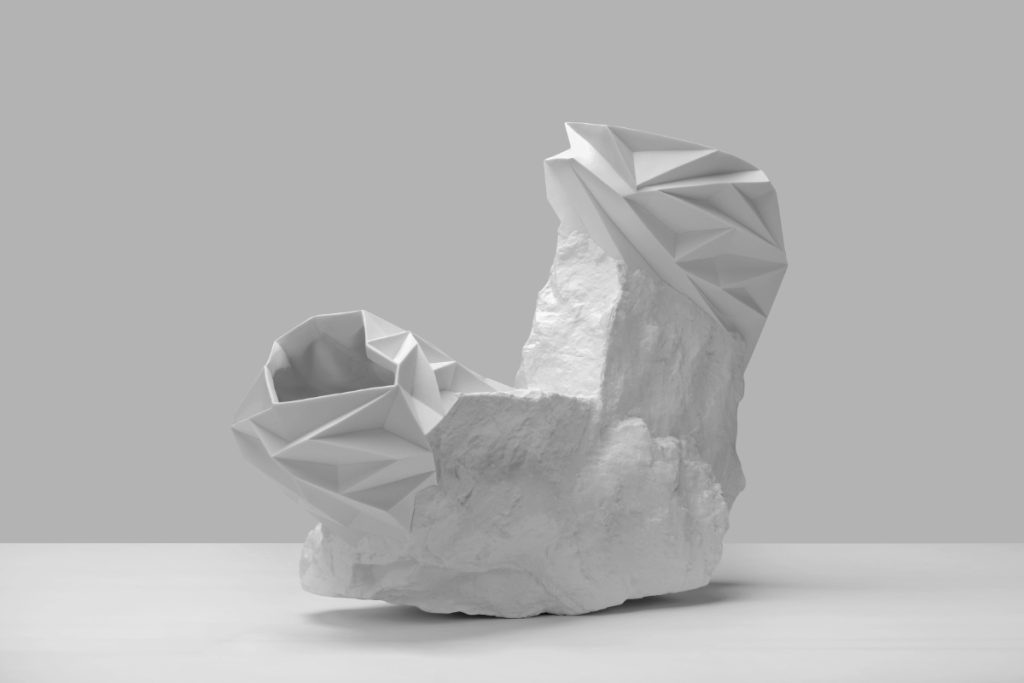
IV. Application and Innovation of Ceramic Molding and Slip Casting Technology
Albite, a traditional raw material in ceramic production, serves as an additive in traditional ceramic manufacturing. It is mainly used to adjust the physical and chemical properties of ceramics, improving the sintering performance, wear resistance, and corrosion resistance. In the New Stoneware series, albite is given a new sense of purpose. The prototype of the natural stone in the works was collected from the albite mine in Sanbao Village, Jingdezhen city. By combining the natural form of the stone with the shapes of paper and artifacts, its role is shifted from a ceramic proportioning material to a core element of the work. While the natural albite is being mined, the unique mining skills of humanity are recorded on its surface. Cutting and striking make the albite exhibit both natural fractured texture and intentional attributes of human craftsmanship (Figure 15).
After the natural stone (albite) is cleaned, delicate porcelain clay is used to adhere to its surface for modeling. Once the modeling is complete, both forms are then used for molding and slip casting. In traditional ceramic production, molding and slip-casting techniques are often considered important processes used to produce large quantities of standardized products. In the New Stoneware series, these techniques are redefined and applied. They serve not only as tools and methods for ceramic creation but as a source of inspiration, allowing natural stone to coexist harmoniously with paper and vessels while innovating the form of the stone in the meantime (Figure 16).
The incorporation of the form of albite in the final ceramic firing process utilizes its shape rather than employing it as a material. In a sense, albite serves as a method of ceramic making. This is an innovative improvement to traditional ceramic crafting techniques. It also signifies my thorough exploration and distinctive expression of modern ceramic concepts and creative methodologies, along with my reflection on traditional ceramic culture (Figure 17).
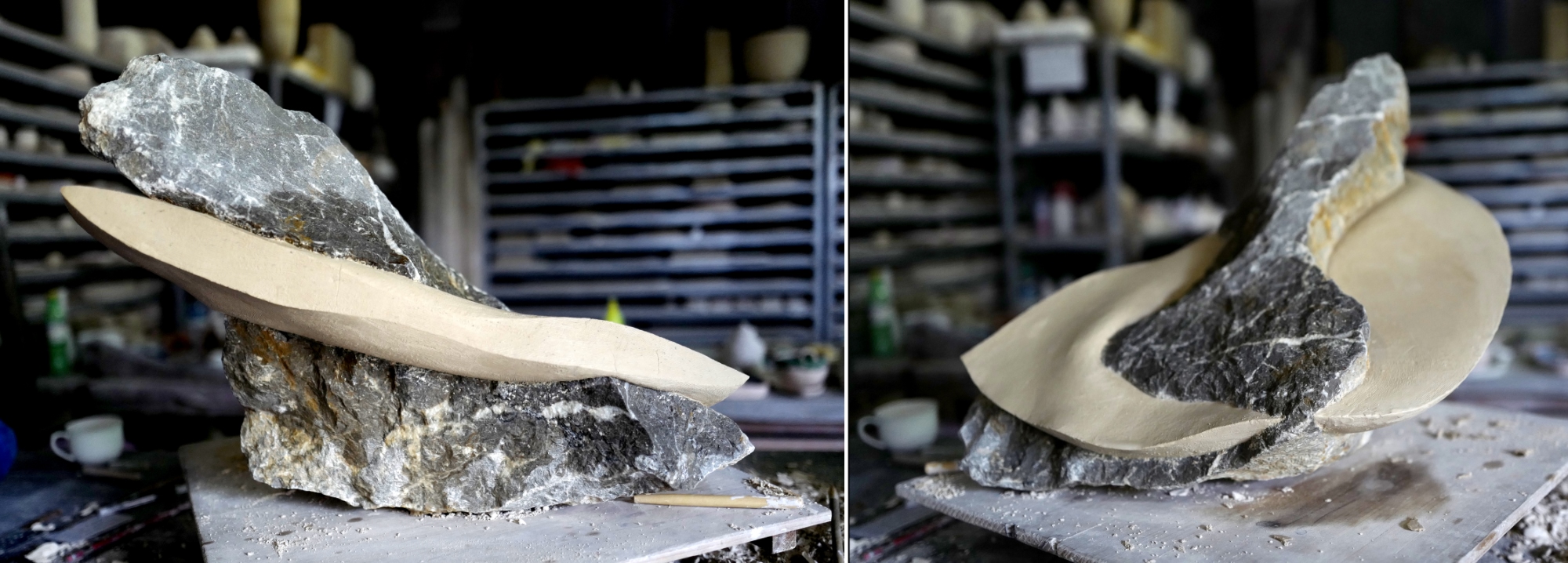

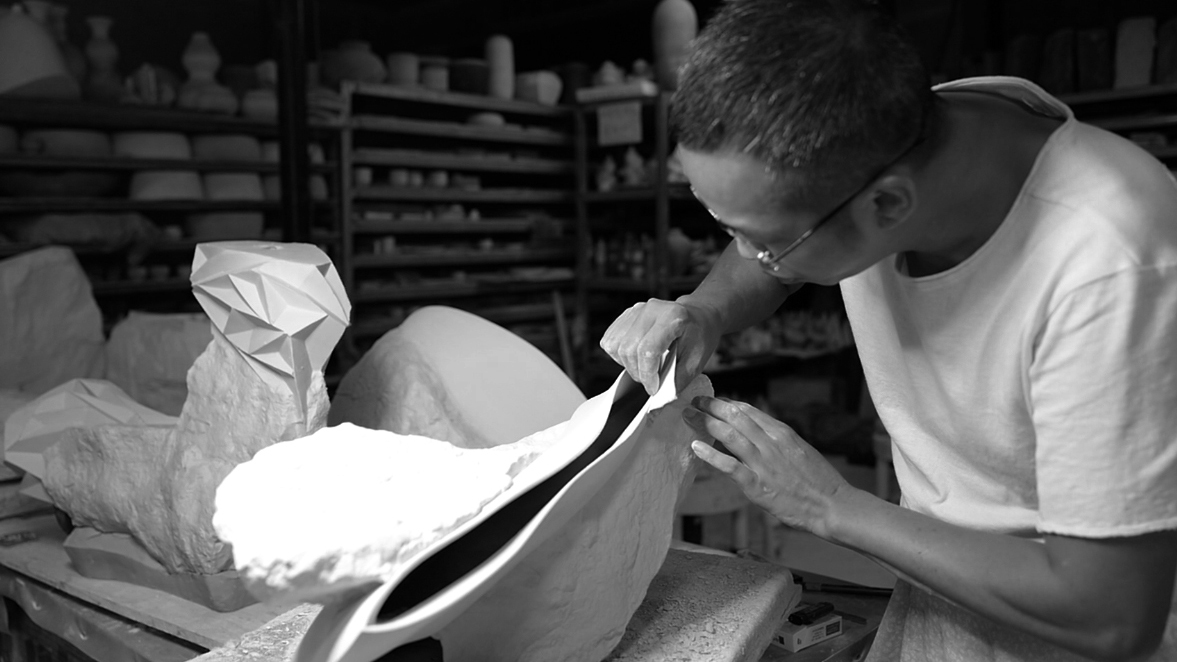
V. The Integration of Tradition and Modernity
Chinese traditional culture, particularly the literati philosophy rooted in the Song Dynasty, places significant emphasis on harmonious coexistence with nature and the pursuit of inner peace and detachment. This enduring philosophy has had a profound and continuous impact on my artistic sensibilities. In the New Stoneware series, there is a tranquil landscape infused with a cultural backdrop that celebrates the beauty of stones, reflecting a deep reverence and yearning for the natural world. This is precisely the imprint left by the traditional cultural heritage on my artistic expression (Figure 18).
In the face of rapid technological advancements and cultural exchanges, artists grapple with the challenge of engaging in a dialogue with modern aesthetics while preserving tradition. For many Chinese ceramic artists, the exploration of how to convey the essence of traditional Chinese cultural genes in their works becomes a central focus. In the New Stoneware series, I strive to address this challenge by blending contemporary aesthetic concepts such as simplicity, abstraction, and diversity. This fusion breathes new vitality into the ancient sentiments rooted in Chinese heritage, allowing them to resonate in the contemporary milieu. These works not only carry the aesthetic essence of traditional Chinese culture but also bear the influence of Western modern art. With a blend of Eastern philosophy and Western openness, this cross-cultural integration imparts a broader international perspective to the artworks. They serve as vessels of culture and history, offering reflections on contemporary society and cultural phenomena.
In this era, the boundaries between technology and art are becoming increasingly blurred. Traditional craftsmanship and modern technology are no longer opposing forces but rather complementary elements that can be harmoniously integrated and mutually reinforcing. I combined traditional ceramic techniques in the New Stoneware series, including molding, slip casting, and firing, with modern technologies. These traditional methods coexist with contemporary approaches such as 3D printing and digital carving, resulting in a diversified range of forms and structures in the artworks. Technology integration is not pursued merely for novelty in form but rather aims to express the unique and complex designs of the works more effectively. Additionally, it opens up possibilities for creating large-scale ceramic artworks (Figure 19).
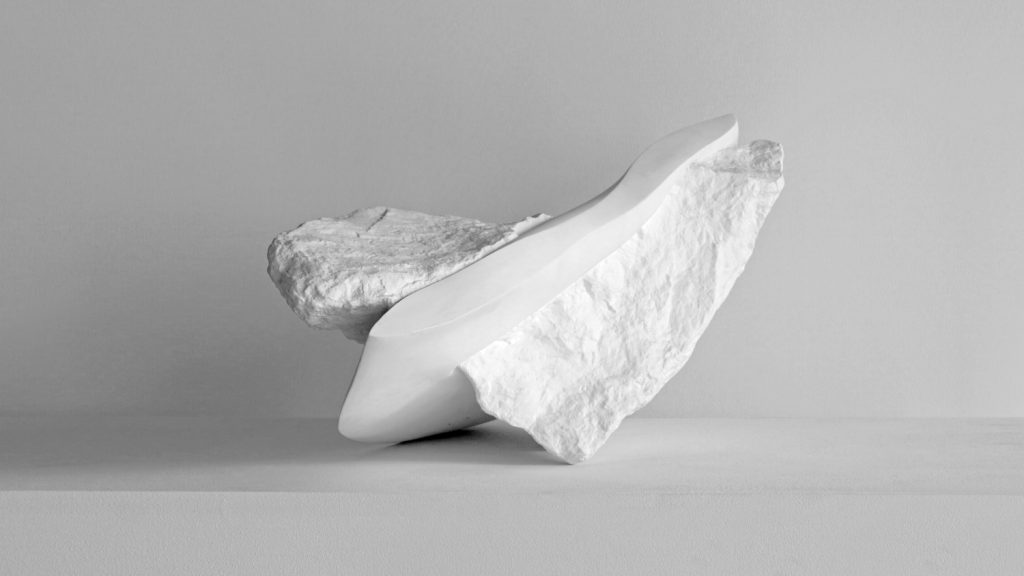
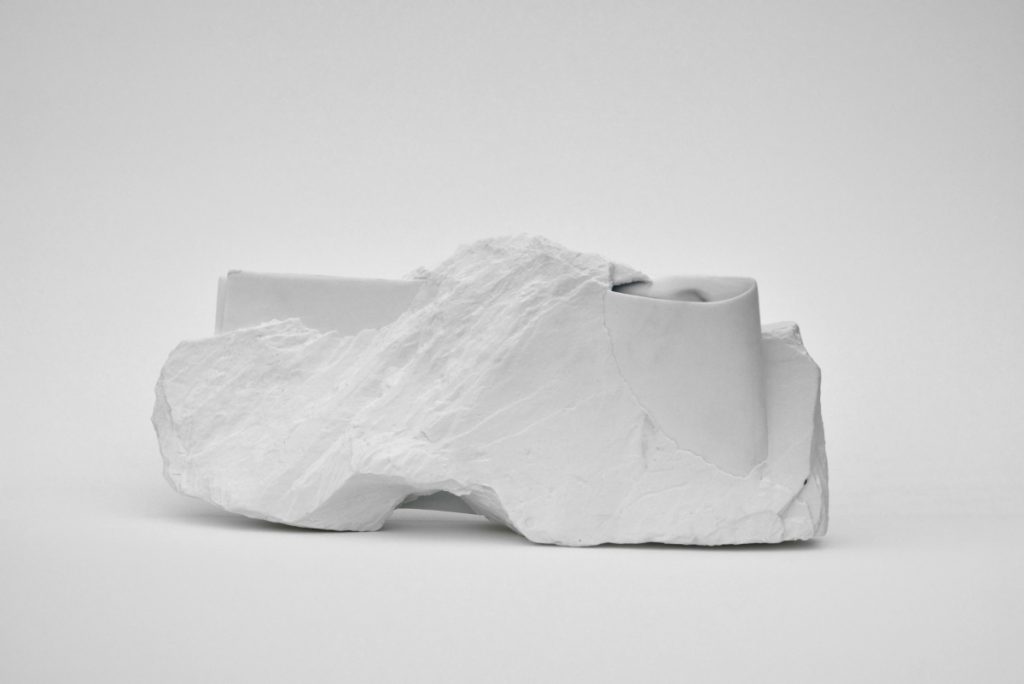
Wu Haoyu’s artworks have been prominently featured in a multitude of international and domestic events and exhibitions, spanning renowned platforms like Art Basel Miami in the US, London Design Festival in the UK, Gyeonggi International Ceramic Biennale in South Korea, Venice Biennale (collateral events), JingArt, Beijing Design Week, Design Shanghai, and Tianjin International Design Week. He has also delivered academic speeches at several exhibitions, including Design Shanghai and Beijing Design Week. Wu’s artistic contributions were recognized with the inclusion of his works in the prestigious 12th National Exhibition of Fine Arts. His pieces have garnered recognition and found a home in the collections of various esteemed international and domestic institutions and individuals. Notable collectors include the Gyeonggi Ceramic Museum, the Embassy of the People’s Republic of China in the Republic of Italy, Chester Beatty Library in Ireland, GALLERY ALL in the US, Tsinghua University Art Museum, Zhuzhong Art Museum in Beijing, Beijing ZIZAOSHE and Shanghai PUSU Furniture.
Wu Haoyu is an associate professor of the Department of Ceramic Design, Academy of Arts & Design, Tsinghua University, and a member of the International Academy of Ceramics. He also serves as Deputy Secretary General of the Ceramic Art Committee of the China Artists Association and Deputy Secretary General of the Art Display & Decoration Committee of the China National Interior Decoration Association.
Captions
- Figure 1 – Encounters No.1, 23×16×30cm, Stoneware, Hand-building, Oxidation flame 1200°C, Sep 2008
- Figure 2 – Encounters No.2, 38×28×35cm, Stoneware, Hand-building, Oxidation flame 1200°C, Dec 2008
- Figure 3 – Encounters No.8, 60×36×85cm, Stoneware, Hand-building, Oxidation flame 1200°C, May 2011
- Figure 4 – Encounters No.7, 32×28×28cm, Stoneware, Hand-building, Oxidation flame 1200°C, Aug 2010
- Figure 5 – Encounters No.6, 38×36×58cm, Stoneware, Hand-building, Oxidation flame 1200°C, Aug 2010
- Figure 6 – Encounters No.5, 65×43×45cm, Stoneware, Hand-building, Oxidation flame 1200°C, Aug 2010
- Figure 7 – New Stoneware 2020 NO.1, 61×20×41cm, Porcelain Slip Casting, Reducing flame 1280°C, Nov 2020
- Figure 8 – New Stoneware 2018-NO.3, 73.5×8×42.5cm, Porcelain Slip Casting, Reducing flame 1280°C, Sep 2018
- Figure 9 – New Stoneware 2017-5, 58×12×42cm, Porcelain Slip-casting, Reducing flame 1280°C, Sep 2017
- Figure 10 – New Stoneware 2018-NO.1, 34.5×10×26cm, Porcelain Slip Casting, Reducing flame 1280°C, Sep 2018
- Figure 11 – New Stoneware 2017-3, 13.5×9×57cm, Porcelain Slip-casting, Reducing flame 1280°C, Sep 2017
- Figure 12 – New Stoneware 2018-NO.2, 33×11×39cm, Porcelain Slip Casting, Reducing flame 1280°C, Sep 2018
- Figure 13 – New Stoneware 2018-NO.4, 56×18×41cm, Porcelain Slip Casting, Reducing flame 1280°C, Sep 2018
- Figure 14 – New Stoneware NO.4, 36×35×28cm, Porcelain Slip Casting, Reducing flame 1280°C, Apr 2013
- Figure 15 – Creating artistic works by combining porcelain clay with the form of sodium feldspar
- Figure 16 – Gypsum molds of the ‘New Stoneware’ series works.
- Figure 17 – The artist is creating ‘New Stoneware’
- Figure 18 – New Stoneware NO.2, 56.5×30.5×28cm, Porcelain Slip Casting, Reducing flame 1280°C Nov 2020
- Figure 19 – New Stoneware NO. 11, 40×10×19cm, Porcelain Slip casting, Reducing flame 1280°C, Sep 2014


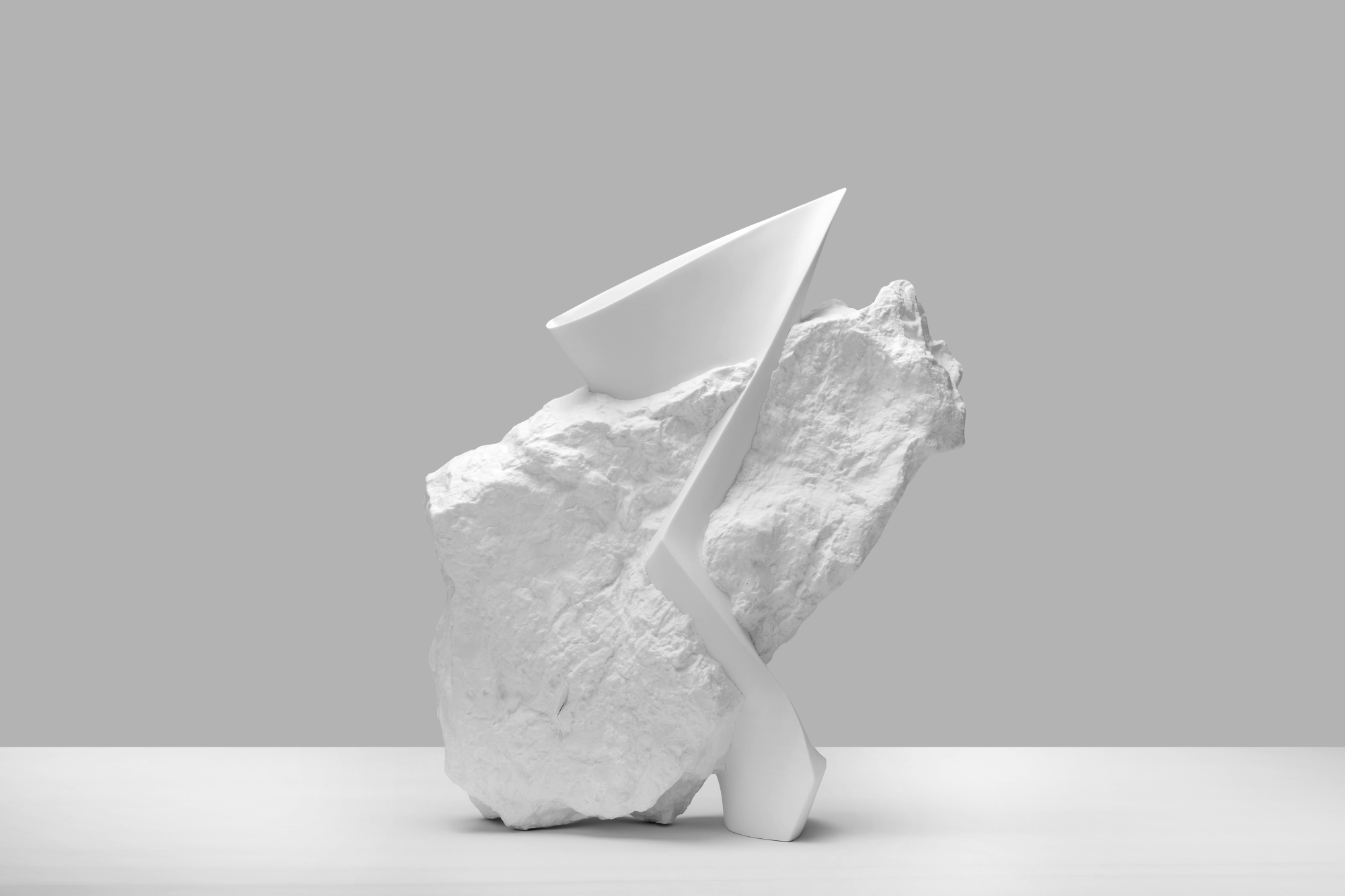













Comments 1